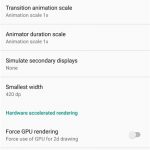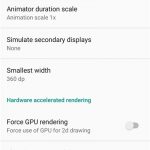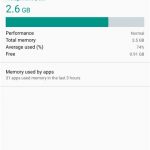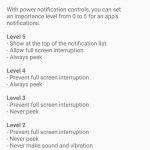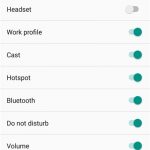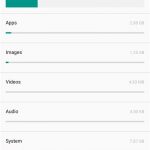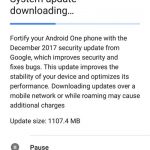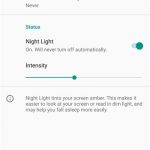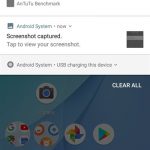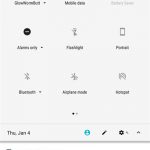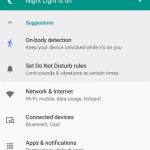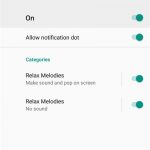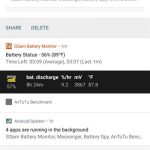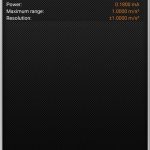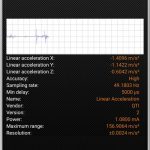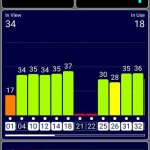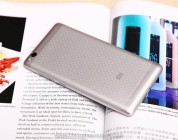Xiaomi Mi A1 highlights
- The A1 is Google and Xiaomi’s Android One collaboration mobile phone. It’s a massive milestone for Xiaomi to be the first chosen for Google’s revived Android One program and this marks the first of Xiaomi’s phones to carry AOSP/Pure Android
- Very good battery life and slim style
- Effective dual-camera bokeh and optical 2x zoom
- Official Global 8.0 already released (We’ve already successfully OTAd)
- The Mi A1 is a great all-around top-pick phone that won’t break the bank
Xiaomi Mi A1 quick specs
- 4G: FDD-LTE B1/B3/B4/B5/B7/B8/B20 TDD-LTE B38/B40
- 3G: B1/B2/B5/B8
- 2G: GSM 850/900/1800/1900MHz
- 4GB RAM
- 64GB ROM storage
- Snapdragon 625
- 7.33mm
- 5.5″@1080P
- Battery: 3100mAh
Interestingly, we see the Mi A1 carries bands 4 & 5 which makes it compatible with 4G in many areas in the Americas, as well as band 20 which is important for some European countries.
Xiaomi Mi A1 review display
The display on the Mi A1 is 5.5″@1080P. Viewing angles are very good with color remaining true even at extreme angles — even when viewing from extreme diagonals which on some phones often display a bluish or yellow tint.
Text is smooth and colors have realistic pop without going overboard. Brightness is even across the frame with only a 3% brightness difference between the bottom and the top. The maximum brightness is a solid 333lux and minimum brightness is 0lux (undetectable by the meter).
- 360dpi vs 420dpi
- 360dpi vs 420dpi
Xiaomi Mi A1 CPU SoC
The A1 is powered by Snapdragon 625. The 625 is one of the most efficient SoC on the market and producing evolutionary battery life in mid-budget mobiles. Snap 625 carried Lenovo P2 to over 19 hours on our battery life test and the 6.44″ Mi Max 2 to an incredible 18h 25m.
Not only is Snapdragon 625 power efficient, it’s also powerful enough to run Android smoothly and play all 3D games on the market at solid frame rates.
Xiaomi Mi A1 camera
The dual rear sensors used in the A1 are the 12-megapixel OV12A10 and OV13880. The sensor data is combined to provide a bokeh effect or can be used as a true 2x zoom due to the secondary lens focal length of 50mm.
While we know that most China phone dual-camera setups are useless, there are some budget-priced phones that carry effective dual-camera setups; you don’t need to spend $800 on an iPhone 8 to get quality dual-camera results.
Recently I received the Mi A1 for review and this is one of the first things I tested after unboxing. I must admit I am pleasantly surprised by the results the Mi A1 puts out, and they make a strong case for spending a few extra bucks on the A1 in comparison to the excellent Redmi 4 Prime or Redmi Note 4.
Here are a couple of shots with bokeh-mode Mi A1.
Note the complicated scene below, the thin stems which are appropriately sharp. The moderately blurred, but not as heavily blurred as the background leaves slightly behind the butterfly. Frankly, I’m shocked how well the Mi A1 handled this shot. It’s uncropped with a few Snapseed adjustments applied; no fancy edits.
The Mi A1 is also compatible with Android 7.0 Google Photos (Android 7.1 Google Photos force closes.) While HDR+ is not available with Google Camera, the blur mode and photosphere modes are 100% working great. No need to root to install, you can just download from any respectable apk mirror site.
Buy Xiaomi Mi A1 (opens in new tab)
In addition to the dual-camera bokeh, the 2nd camera is a 50mm crop, which means it is a true optical 2x “zoom” in comparison to the 25mm primary camera. This means you can get crisper large crops and add some natural bokeh in comparison to if you took the shot with the primary camera.
I have an example here illustrating some of the power of the extra zoom. In the first two images, the 50mm is shrunk to match the resolution of the 25mm 1:1 crop. In images 3 and 4, the 25mm regular shot is enlarged to match the true 1:1 crop from the 50mm lens. In both cases, the 50mm is clearly superior. The last image is from the original 25mm lens uncropped and shrunk.
Most people will unlikely be making crops like this, but you could imagine a situation where it might be handy. It’s all about adding tools to your arsenal.
- 50mm shrunk to match 25mm
- 25mm 1:1 crop
- 50mm 1:1 crop
- 25mm crop and enlarge to match 50mm 1:1 crop
- 25mm original image (resized to 800px)
Here is the gallery. None of these shots have been edited other than re-size to 720P@85% jpg quality. Check out the first two shots of Floki, my cat. One is bokeh portrait mode, the other is with the phone a bit closer to him and normal shot. If you’re interested in comparing these to other phone cameras, check out our galleries at Flickr (opens in new tab).
Addtionally, Mi A1 has excellent oleophobic camera glass. You can run your finger across the rear camera and no print is left behind. Any smudges that do occur wipe away easily.
Xiaomi Mi A1 screenon battery life and charging
The Mi A1 scores 9 hours 40 minutes on the 720P / YouTube / WiFi / 140lux test. If we take a look at the Redmi Note 4X (opens in new tab) with 4000mAh which scored 14 hours, and the Lenovo P2 (opens in new tab) with 5000mAh which scored 18 hours, we see that for each additional 1000mAh Snapdragon 625 phones are achieving approximately 4 additional hours.
With typical medium stress use, Mi A1 should give users about 6-8 hours screen on a day which should be well more than enough for most users.
Battery charging to 100% takes just under 2 hours. Note that after 100% the phone will continue to saturate the battery for an additional 20 minutes or so. Voltage reaches an excellent and solid 4.35V.
In the official Mi A1 Android 8.0 Developer ROM, Quick Charge has been enabled. We should see a full charge in about 90 minutes with the update to 8.0.
Xiaomi Mi A1 Antutu and Geekbench
Xiaomi Mi A1 scored 64.4k in Antutu.
- Xiaomi Mi A1 Geekbench 4
- Xiaomi Mi A1 Antutu
In the Xiaomi Mi A1 Geekbench 4 test the scores were 881/4344.
Xiaomi Mi A1 OS
If you’re considering the Mi A1, likely one of the standout features for you is Pure Android OS. It’s a first for Xiaomi and a very welcome addition to the Xiaomi lineup.
- Official Pure Android 8.0
- System transitions and animations are very smooth
- Fast tap typing is quick and stutter free
- Slow and fast scrolling are smooth and with appropriate inertia/friction
- White balance is perfect
- ROM storage is 51GB available for the user
- RAM is 3.5GB available (1.9GB average use). This is well more than what’s needed for all classes of user, from casual to power-users
- RAM use
- notification controls
- edit icons shown in notification bar
- storage
At the risk of sounding like a broken record, Android 7 and 8 are the first Android Upgrades which offer features I appreciate — basic DPI adjustment can easily be set from Display settings, or even more customized DPI in Developer Mode. And, Split-Screen is natively available.
Thankfully, the update to 8.0 has given back a feature we missed in 7.1.2 — system night mode.
- downloading Oreo
- 360dpi vs 420dpi
- 360dpi vs 420dpi
- night mode is back!
- Oreo notifications
- Oreo quick tiles
- Oreo settings
- Oreo silence notification
- silence notification categories per app
- useful info in notification pulldown
Xiaomi Mi A1 review components
In addition to the standard array of components, Xiaomi Mi A1 carries an infrared remote which often comes in handy, as well as a hardware step sensor. Though notably, it is missing an FM Radio which many Chinese phones do have, I’d wager this is a non-issue for most everyone.

excellent GPS SNR
- Gyroscope — working without issue
- Accelerometer — working without issue
- Light sensor — working without issue. Display brightness appropriately adjusting
- Linear acceleration — working without issue
- Rotation vector — working without issue
- Compass — working without issue
- Notification LED — Single color (white). Working without issue
- Gravity — working without issue
- Bluetooth — working without issue (tested Bluetooth headphones and file transfer)
- OTG — working without issue (tested USB SD drive)
- GPS — Excellent. Lock is quick with 7 satellites remaining in the mid-high 30’s SNR and accuracy within 3m
- Fingerprint sensor — Excellent. Registering a finger just once allows quick, casual scan-ins from all angles. Scan in from deep sleep is no problem
- WiFi — Excellent Reaches 244ft / 44m staying stable and quick. 5GHz WiFi working without issue
- Step sensor — working without issue
- Loudspeaker — Very good. Beyond adequate loudness with solid depth.
- Infrared Blaster — working without issue (tested AirCon)
- Flashlight — Bright. Dual-tone LEDs (one amber and one white)
- accelerometers
- compass
- gravity
- step counter
- linear acceleration
- gyroscope
- rotation vector
- excellent GPS SNR
Xiaomi Mi A1 end of review
The Xiaomi Mi A1 is a very good phone and a great beginning for Google’s Android One program. It’s a phone I would not hesitate to recommend to a friend or family member. The big bonus here is that we have Android 8.0 already, slated to receive 9.0, and effective bokeh / 2x zoom camera.







